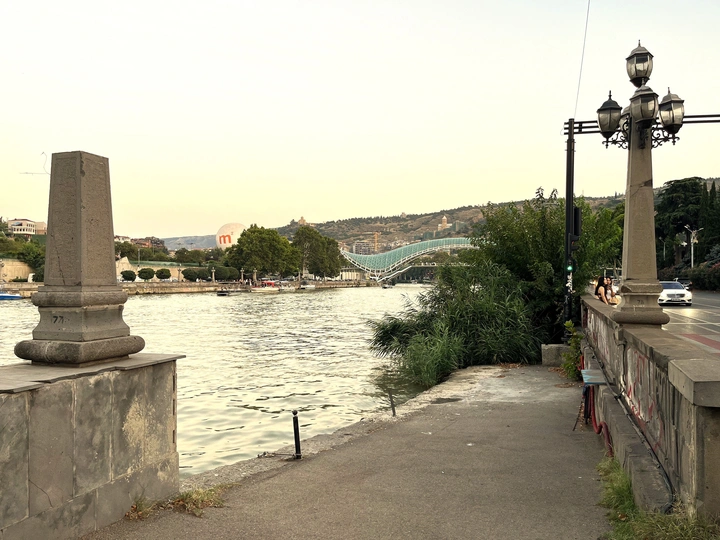River Transport: Reclaiming Tbilisi’s Waterways

Media producer and a writer from Tbilisi with a distinct interest in contemporary urban design and photography. Worked on various media projects in major television, print, and radio outlets in Georgia.
One of them was the production of documentary series on contemporary Georgian urban developments which aired on Maestro TV in 2015, with 10 episodes on challenges in Georgian urban development - such as masterplan development for the capital city, waste management, public green spaces, and recreation, transportation, etc. These topics sparked discussion among professional urbanists and raised public awareness of the correct approach to the challenges in various aspects of local urban development.
Within the framework of LINA fellowship, worked with MAXXI Architecture Film Lab, producing a short video on history of Tbilisi’s central railway station - its architectural transformation and future needs. The video was presented during the exhibition “Restless Architecture” at the MAXXI Museum, Rome, in 2024.
Aside from documentaries, also interested in urban photography, while documenting its important developments and changes for about 20 years.
Has a master’s degree in journalism and mass communication from Ohio University. Is well acquainted with organizations, teams, and individual professionals in the Georgian urban and architectural field, which helped him produce comprehensive media products on urbanism, including the above-mentioned documentary series, as well as published articles on various related topics.
This proposal is working with European urban planners within LINA network to outline possibilities of turning Tbilisi’s abandoned river docking points into full scale municipal water transport stops, to introduce new water connection routes throughout the city’s waterfronts, and evaluate its possible impacts on the city’s transportation infrastructure.
River Mtkvari (referred as Kura outside Georgia) has always been a central artery for the city’s life since its foundation. Till the 1930s the riverbanks served as a daily destination for Tbilisi’s population for various reasons: recreation, watersourcing, milling, fishing, bathing and transportation of goods. After the establishment of Soviet rule in Georgia, and the start of industrialization, Mtkvari underwent several changes that impacted its use for century to come. In the entrance and exit of Tbilisi, dams (respectively Zahesi and Ortachala) were constructed to harness hydro power. In addition, as Tbilisi started to expand according to new (and first ever) masterplan, once serene riverbanks transformed into transportation arteries, with several-meter high retaining walls that banished people’s access to the river, with exception of a dozen water access points that served as docking stations of tourists, emergency and sporting boats. In modern times, Mtkvari river, and these docking points along Tbilisi waterfront, have never been used for public transportation, however during 1970s and 1980s, Soviet planners were considering establishment of water transport in Tbilisi, that would use convenient position of the river to add effective connection public transport access points throughout the city. However, the plan was not finalized and then the empire disappeared entirely.
Today, as Tbilisi is experiencing enormous pressure on its public transportation network, it is reasonable to get back to the old plan of using Tbilisi main waterway for public transportation, just as it is in many cities in Europe.